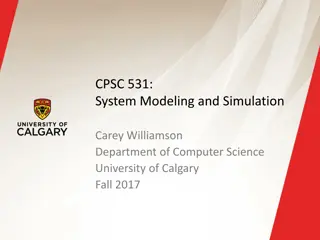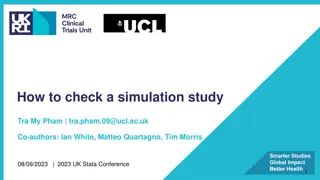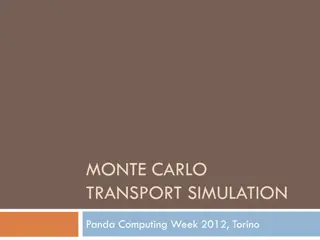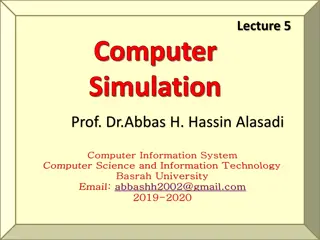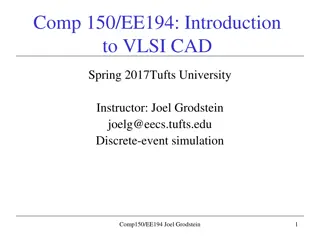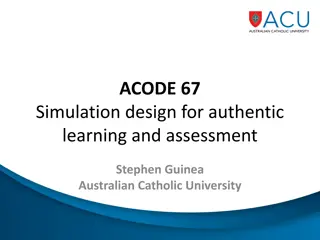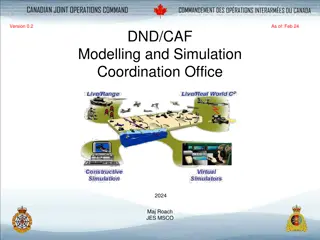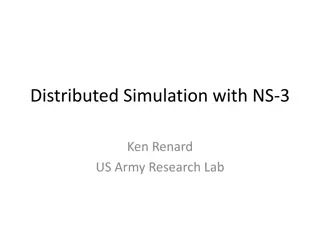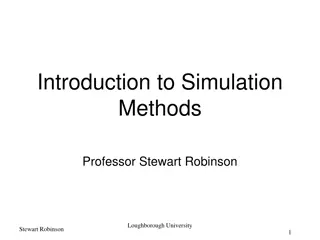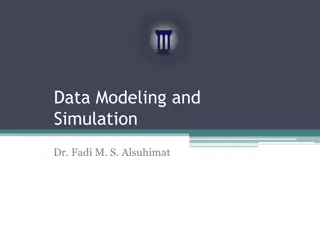Simulation in Education: Origins, Objectives, and Principles
Simulation in education encompasses a wide array of uses, from training pilots in war games to aiding students in developing problem-solving skills and human interaction abilities. Its origins can be traced back to ancient India's war games and have since evolved to encompass various learning outcomes. Understanding the principles of simulation, such as clear objectives and realistic scenarios, is essential for its effective implementation in educational settings.
Download Presentation

Please find below an Image/Link to download the presentation.
The content on the website is provided AS IS for your information and personal use only. It may not be sold, licensed, or shared on other websites without obtaining consent from the author.If you encounter any issues during the download, it is possible that the publisher has removed the file from their server.
You are allowed to download the files provided on this website for personal or commercial use, subject to the condition that they are used lawfully. All files are the property of their respective owners.
The content on the website is provided AS IS for your information and personal use only. It may not be sold, licensed, or shared on other websites without obtaining consent from the author.
E N D
Presentation Transcript
Simulation Simulation
Objectives State the meaning Define simulation Trace back the origin of simulation Explain the purpose List the uses Describe the principles Describe the steps followed Explain the role of a teacher Enumerate the types Analyse the values List the advantages and disadvantages
Meaning : It is a technique or device that attempt to create characteristics of a real world. In health care , simulation refer to a device representing a simulated patient or part of a patient, or a situation happens in the health care setting , such a device can respond to and interact with the action of a learner
Definition Simulation has been defined as an attempt to give appearance and /or to give the effect of something else. (Barton 1970)
Origin War game in ancient India Chess is believed to be the original war game and decides the fate of the battles during I world war it used to train the pilots in air force By 18th century military game were in use for the analysis of real world battle situation
Purpose Help the students to practice decision making skill Develop problem solving skills Develop human interaction abilities. Student achieves cognitive affective and psychomotor outcomes To make Learning more creative by Learning by doing
Uses Used to achieve learning objectives Help student gain skill in applying the nursing process Learn to solve problems efficiently with minimal wasting of time. In the acquisition of communication skills. An avenue for attitude change
Cont. Fostering decision making skills Can be applied to the learning of psychomotor skills. Used for evaluation (student learning and competencies.)
Principles: Clear stated objectives Actual patient care experiences Proper orientation of proceedings/scenario Must challenge the use of problem solving and critical reasoning Role of educator must be a facilitator It should be a collaborative approach between educator and simulator Each simulation should include feedback and evaluation session
Steps : Step I: prepare the group. Assign letter designation to all the members Step II: planning, preparation and deciding the topic of skill to be practiced Step III: Prepare a detailed schedule of interaction. Decide who will start the conversation Step IV: Decide the procedure of evaluation Step V: Conduct the practice session, provide feedback for the improvement Step VI: Change the topic and move on to the other skill
Role of a teacher Planning Facilitating Debriefing
Types Written simulation . Audiovisual simulation. Live stimulated simulation. Stimulated simulation
Different equipment used Video recording Simulation device 1. Part task trainer 2. Complex task trainer 3. Integrated simulators Standardized patient/Simulated patient Screen based computer simulator
Values of simulation Ensures safe nursing practice. Help to learn psychomotor skills Develop critical thinking abilities Help to inculcate proper attitude among nursing students Create a real life situation Gives feedback for the improvement
Advantages Reduces the complexities of real life . Motivate people to learn. Effective for all type of students. Encourages creative and divergent thinking.
Cont.. Learning by doing. Opportunity to learn from mistakes. Develop problem solving skills. Student centered teaching method
Disadvantages Time consuming Costly Usable for small groups. Models often easily damaged
Cont.. Never same as performing technique on a patient. Cannot generalize the result of single simulation to all situations Emotion laden simulation may cause mental trauma


